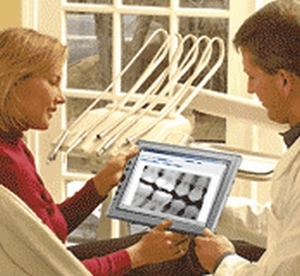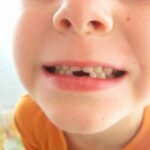In response to the recent column on the American Dental Association’s (ADA’s) new recommendations for fluoride use, Mr. Preshit Mulay, a dentist of Cornwall, United Kingdom, writes, “Aren’t there similar recommendations for radiological examinations for children and young adults?” Preshit, thank you for prompting such a timely article.
The September 2006 issue of the Journal of the American Dental Association (JADA) contains a very important missive from the ADA Council on Scientific Affairs, “The Use of Dental Radiographs – Update and Recommendations.” The Council on Scientific Affairs (CSA) advises the members of the ADA on best practices. Nonmember American dentists and other dentists around the world regard the ADA highly, so this kind of report effects dentistry, dentists and patients, around the world.
Most of the recommendations are not new to dentists. There are suggestions about managing dental staff. Dental staff should receive appropriate training on the correct use of x-ray equipment including information about x-ray health and safety. Dental staff should know how to develop x-ray film. It is important to monitor dental staff’s exposure to radiation and prevent overexposure. The Massachusetts Board of Registration in Dentistry, licenses dentists and dental hygienists and certifies dental assistants to expose radiographs (take x-rays). Dental assistants may be certified in dental radiology after taking a course and a state sponsored exam.
There are technical recommendations about the setup, maintenance and usage of x-ray equipment. Dental x-ray equipment in Massachusetts is licensed and registered by the Office of Radiation Health and Safety (RHS). RHS must approve the plans of every new dental office in the state and approve changes to existing office configurations and equipment. Every Massachusetts dental office should display a copy of their registration near every x-ray generator.
The recommendation that may be of most interest to dentists and patients addresses the frequency of dental x-ray examinations. Historically, dentists prescribe regular x-ray examinations for patients on a schedule. Full sets of radiographs (up to over twenty individual films or a large panoramic film and two to four “bite wing” films) for all new adult, adolescent, and many younger patients. Then, every three to five years after, smaller sets of “bite wing” films update the patient’s record annually. New full sets are repeated periodically depending on the patient’s dental condition.
The CSA’s recommendations advise dentists to carefully evaluate the benefit of x-ray exposure for each patient. For example, a healthy patient who is twenty years old, and who has never had tooth decay, may not benefit from a routine, annual x-ray examination. Conversely, a teenager who has a history of severe decay, and who drinks carbonated beverages daily, may benefit from twice yearly bite wing radiographs to find new decay earlier. Patients who have xerostomia or dry mouth require more frequent x-ray examination.
Dental disease effects the outcome of many types of treatment. It is the responsibility of medical doctors to refer their patients to a dentist for evaluation before scheduling many kinds of surgery, chemotherapy and radiation therapy. These evaluations require the use of dental x-ray examinations.
The ADA’s recommendations, now echoed by the Food and Drug Administration (FDA), include instructions that [dentists] should prescribe radiographs after an evaluation of the patient’s needs that includes a health history review, a clinical dental history assessment, a clinical examination and an evaluation of susceptibility to dental diseases.(National Council for Radiation Protection & Measurements. Radiation protection in dentistry. Bethesda, Md.: National Council for Radiation Protection & Measurements;2003.) Apparently, the days of the hygienist or dental assistant taking x-rays for the dentist to see during a patient’s initial exam are coming to an end. In the near future, dentists will see the patient first and then ask technicians to take specific x-ray views when and where needed.
It is likely that dentists will feel that they must continue their practice of regular x-ray exams for all of their patients. They will feel that it is likely that they will miss the opportunity to diagnose decay and systemic disease early. This may be true in some cases. Nevertheless, the ADA and the FDA feel that after the dentist evaluates their patient and orders imaging on a case by case basis, the benefits of less x-ray exposure will outweigh the risk of under diagnosing.
Another issue the CSA addresses is the use of digital dental x-ray imaging. Many dental schools and dental offices are spending large amounts of time and money on this new technology. For dental schools and large offices, digital radiology is an effective convenience. Often, schools and large group practices require the presence of a patient’s chart and images in multiple locations. Storing records and images digitally allows practitioners to view a patient’s information at any location instantly.
However, the CSA does not mention some important issues regarding the regarding ownership, stability, and storage of digital images. Some dentists believe that they have exclusive rights to view their digital radiographs electronically. They only provide paper copies to other practitioners. The paper copies do not have the detail or longevity of the electronic version. That practice forces some patients to pay for the subsequent dentist to take new x-ray exams. The additional exposures increase the patients exposure to radiation. If a dentist is using a digital x-ray system, patients may ask what that practitioner’s policy is regarding sharing the digital images with other offices.
Finally, how safe is the storage of these images? Does the dental staff routinely back up their computer data?
The Massachusetts Board of Registration in Dentistry must address some of these issues. The dental community at large will determine the others. For now, digital dental radiology is an adequate, if not equivalent technique for dentists to use to examine their patients for dental and systemic disease.
Reference:
- The American Dental AssociationThe Massachusetts Dental Society






